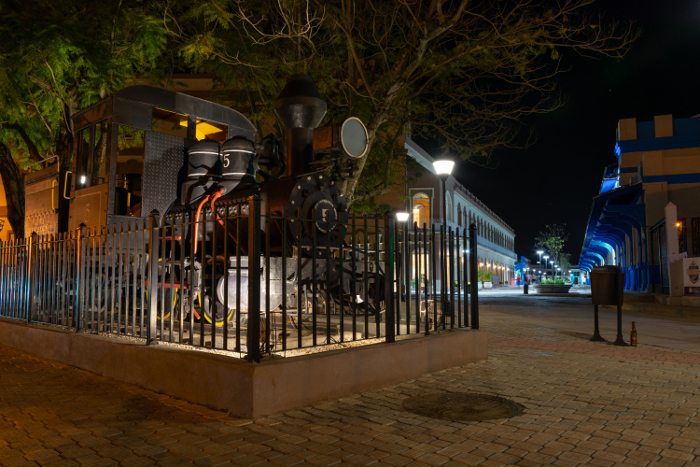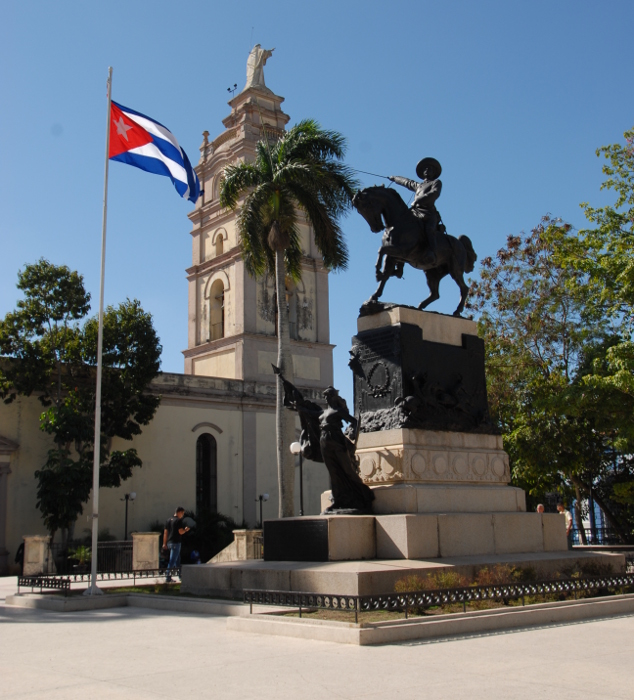CAMAGÜEY.-The city and the plans with it are variables of an equation that the Office of the Historian of Camagüey helps to solve, but cannot do it alone. In the coming and going of projects, consultations and works, it has repaired walls and has tried to focus the views and the commitment of people and organizations to the common good of public space.
Its director, José Rodríguez Barreras, tells Adelante.Digital of achievements and goals, despite COVID-19.
“In 2020, the dreams had to be postponed. We take advantage of the time to outline them, with the work of training young people to seek better ideas based on more inclusive public spaces, for the communication of heritage with the use of new technologies, and for the opportunity of citizens to express their opinion, because who makes the city endure is the inhabitant ”.
 Photos: Leandro Pérez Pérez/ Adelante/ Archive
Photos: Leandro Pérez Pérez/ Adelante/ Archive
"But the Office never idles, how far did it get with the Railway Museum?"
—The restoration works are expensive. Last year we were limited by material and financial resources. In the case of the Railway Museum, we are working on a new exhibition area with contemporary machines, we have the technology and we aspire to open it in 2021.
“Independencia Street is another comprehensive work. We also continue to pay off the old debt with the General Cemetery of Camagüey. Its important funerary repertoire is an expression of the city. We intend to specify two exponents: to do justice to the martyrs of 1851, with a proposal for a pantheon for Joaquín de Agüero and his companions; and to achieve a Cemetery Interpretation Center for thematic tours, with special deference to the figure of Ignacio Agramonte, made possible by the latest research carried out and still in progress to clarify what happened to his remains ”.

—Agramonte has marked the passage of the institution, from the El Mayor route, which allowed the recovery of sites and buildings. Why?
—The main historical sites related to him will always receive the attention they deserve. I am referring to his birthplace, the park, the Quinta Simoni, the Potrero de Jimaguayú and the Plaza de San Juan de Dios. We have constructive issues pending with the Plaza de la Revolución. In another order, the third edition of the book Ignacio Agramonte and the combat of Jimaguayú by our publishing label El Lugareño, one of the latest contributions by Elda Cento, is ready. When it is presented it will also be a tribute to her.
—How does the Office celebrate the 507th birthday of a town that survives in the city's cultural heritage?
—We celebrate the founding of the Villa with actions in the digital ecosystem, such as virtual concerts, and we awarded the Fulgencio Arambula Public Alarife Award, for the work of life. We skip our Symposium because we consider it wiser for people to take care of themselves.
“The pandemic creates uncertainty, for the very subsistence of people. The situation changes priorities and issues are ignored. For example, the loading and unloading schedule for the Historic Center was regulated, but now, how to prevent access at another schedule. In the midst of so much anxiety, sustaining this work requires innovation, sensitivity and perseverance for the heritage message to reach ”.
Today we cannot walk in the streets for pleasure, take the children to run around the park, seek the old silence of a square or talk without fear of getting sick. The impossibility of enjoying the city due to the pandemic activated the affective memory of the inhabitants.
Hopefully, amid so much longing, we know how to correspond with good practices for the good that this institution has been doing since February 24, 1997 in pursuit of civility and the development of our city.
- Translated by Linet Acuña Quilez


